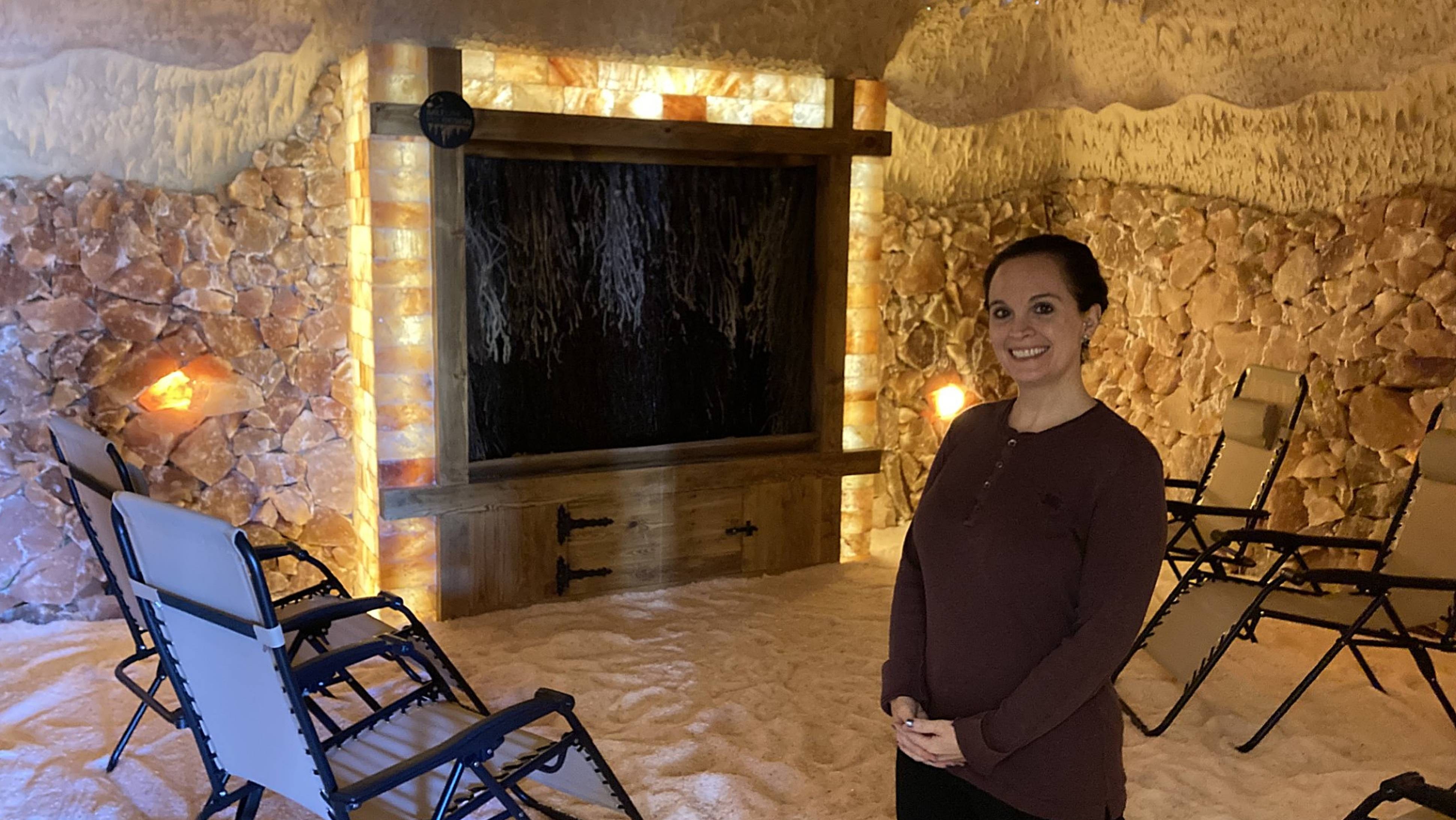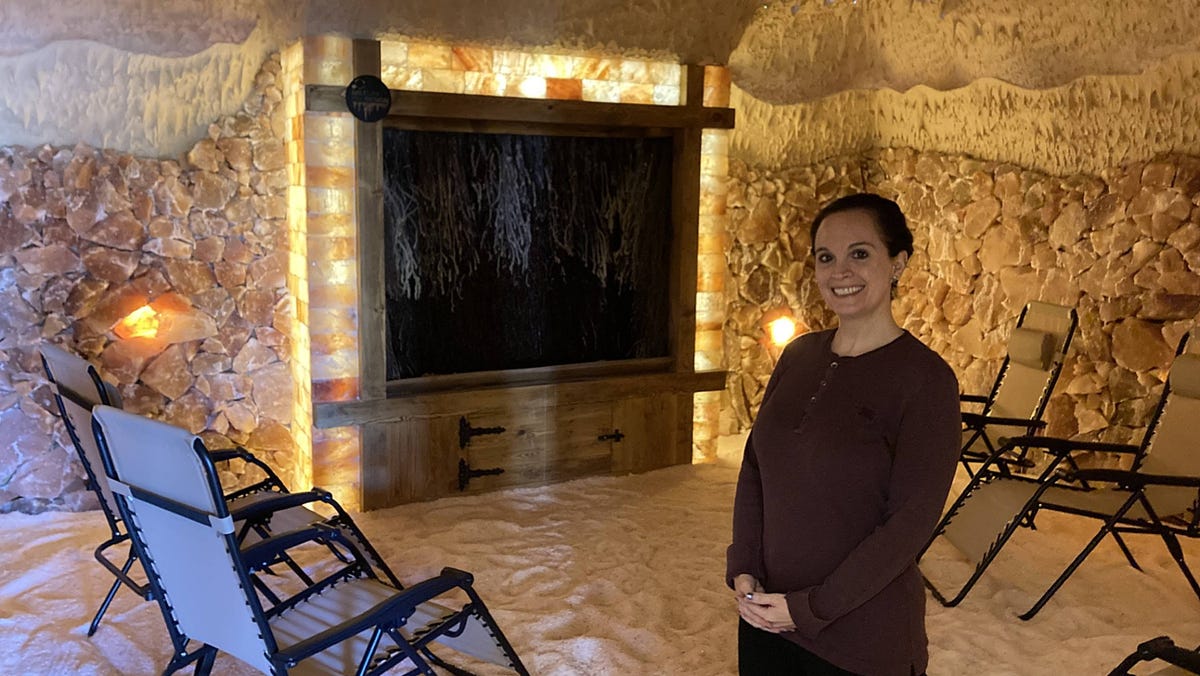
European-style salt cave opens in Millcreek Township in Erie County
Ingrid Renberg, co-owner of Relaxapy, explains how people use a salt cave to relieve stress, breathing issues and skin problems.
Salt therapy, or halotherapy, is a wellness treatment believed to ease breathing issues and improve skin hydration.One local resident reports that sessions in the salt cave help reduce her need for supplemental oxygen.The new salt cave is part of a wellness center called Relaxapy, where 25- and 45-minute sessions are offered for a fee not covered by insurance.
Northwestern Pennsylvania’s newest salt mine is located in a former hair salon, wedged among several other shops in a popular Millcreek Township shopping plaza.
Dr. Ingrid Renberg hired a team from Poland to build the mine as part of Relaxapy, 1101 Peninsula Drive, a new wellness center she owns and operates with her husband, Corey Borello. Relaxapy officially opened in early October.
“I wasn’t aware of salt caves until one day when I saw one at Ellicottville, New York, while my husband was snowboarding at Holiday Valley,” said Renberg, a psychiatrist who is the director of psychiatry for the Pennsylvania Department of Corrections. “I tried it with my girlfriend during a girls’ weekend and it was fantastic. I couldn’t believe Erie didn’t have one.”
Salt therapy, also known as halotherapy, is a natural wellness treatment that traces its roots back to the 19th century. A doctor at that time noticed workers in a Poland salt mine had fewer lung problems than workers in other types of mines, according to a Cleveland Clinic online article.
The theory behind the benefit of salt mines is that breathing salty air can thin the mucus in a person’s lungs, allowing those with breathing issues to expel more phlegm.
Exposing yourself to salt-saturated air can also improve your skin’s hydration, making it feel smoother with fewer splotches, Renberg said. The calmness of the salt cave also can reduce stress.
But there aren’t many scientific studies to support these claims, said Dr. Melissa Young, a Cleveland Clinic functional medicine specialist.
“Sometimes, it can be frustrating that there aren’t enough well-designed studies looking at a particular treatment or the different study outcomes can be conflicting,” Young said in the Cleveland Clinic article. “But that doesn’t mean there isn’t a potential benefit to that treatment.”
Visiting salt mines helps Millcreek Township woman use less oxygen
Rhonda Kane has been using salt caves since 2019 to ease her breathing problems. The 68-year-old Millcreek woman has been using supplemental oxygen since contracting a severe case of flu in 2019.
She traveled out of town to spend time in a salt mine before spotting a sign in front of Relaxapy during a visit to a nearby pharmacy.
“I was one of their first customers,” Kane said. “I go in and sit down, and I get so relaxed that I don’t want to get out. I usually use four liters of oxygen a day but I only need three liters a day for several days after a visit.”
One important salt cave rule: Don’t lick the walls
Relaxapy’s cave is about the size of a large living room, with dim lighting and artificial stalactites on the ceiling. A graduation tower stands along one wall, with salt water flowing over its birch branches, increasing the saltiness in the air and providing a soothing sound.
The cave’s walls are filled with blocks and rocks of Himalayan salt, while a few inches of loose salt cover the floor. People either sit on a blanket or in one of several anti-gravity chairs.
“We have had to tell people not to lick the walls,” Renberg said with a laugh. “Yes, it tastes like salt but please don’t lick.”
A 25-minute session costs $20 and a 45-minute session costs $40. Salt therapy is not covered by health insurance.
Contact David Bruce at dbruce@gannett.com. Follow him on X @ETNBruce.

